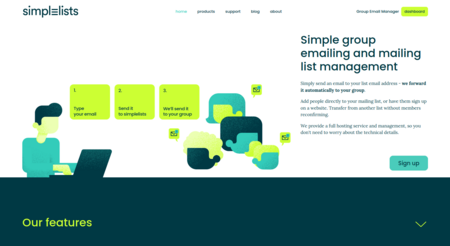
A common conundrum - pay for a listserv or get a listserve free of subscription? We’re all tempted by the idea of getting something for nothing!

Simplelists is excited to announce a new brand and an updated website. This refreshes the look and feel of Simplelists and provides enhancements to the navigation of the product. View the video or read on for more information.

In today’s crowded inbox landscape, sending the same email to every subscriber won’t cut it. Stand out with segmentation! By dividing your list into targeted groups, Simplelists makes delivering personalized and impactful content easy. Capture attention, boost engagement, and maximize ROI. Sign up now and experience the power of relevance with Simplelists.

In the realm of online communities, Yahoo Groups reigned supreme as a platform for connecting like-minded individuals through mailing lists and group discussions. However, the sun has set on Yahoo Groups, leaving a void for its users, particularly those who were part of the FSOA (Foreign Service Oral Assessment) Yahoo Group.

In the digital age, email remains a powerful tool for businesses to communicate with their audience and drive engagement. Building an email list is a crucial step in leveraging this tool, enabling your business to reach its target audience directly, foster strong customer relationships, and boost overall marketing effectiveness.

In today’s digital age, email has become an essential tool for communication. It is used by individuals and businesses alike to connect with customers, colleagues, friends, and family. Group email is a communication tool that allows businesses to communicate with a group of people simultaneously. This article will explore what a group email is, what it is used for, and how it can be managed using a group email service.

Email marketing is nothing new. It has been around since the widespread adoption of digital communications. That’s almost three decades, give or take a few years. Yet even today, in 2023 leveraging a strong discussion list as part of your email marketing is still one of the most effective ways for businesses to reach and influence new and existing audiences.

GDPR introduced a new era of protections for consumer privacy and forever changed the way that businesses across Europe captured, processed, stored, and used personal data.

Despite the developments in social media platforms and project management tools over the last decade, email is still the king of business communications.

You’ve got a business idea, product launch, or important news, and you’re bursting with enthusiasm, and want to share it with the world.

When you’re crafting an email for your audience, you’ll probably spend a lot of time coming up with a compelling subject line to try and improve the open rate and avoid triggering spam filters.

Listserv management is a crucial part of every business.